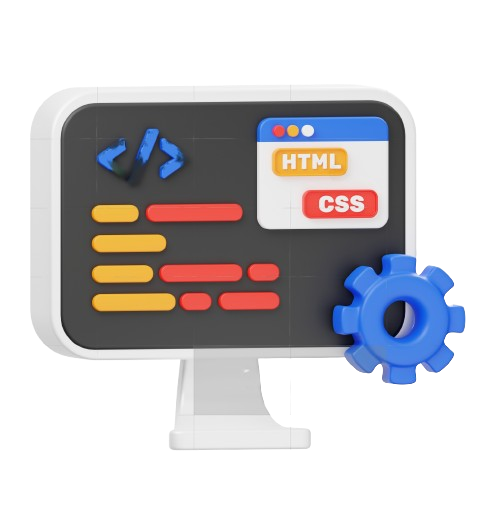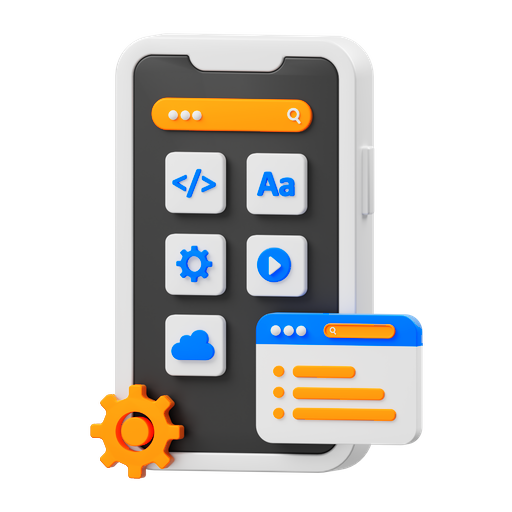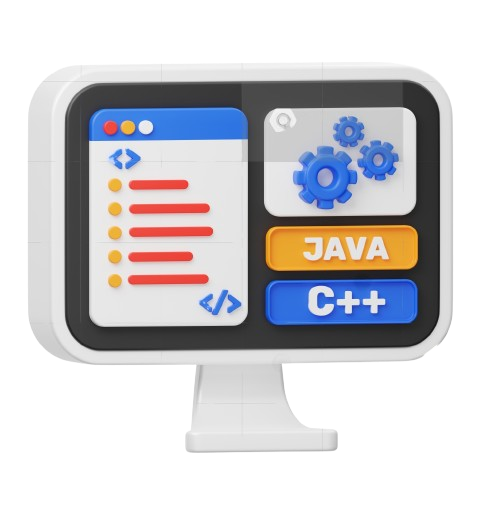The Ultimate Guide to Building a Dominant P2P Payment App
If you are struggling to navigate the 2025 P2P payment app compliance and security, we engineered a bank-integrated, 40% faster, quantum-secure P2P app for a $154k-$265k MVP cost. In this blog, we have provided step-by-step information.
What Are P2P Payment Apps?
P2P payment apps are fintech software enabling direct money transfers between users without intermediaries. These custom solutions use mobile technology, blockchain, or bank networks to enable low-cost transactions.
Top Use Cases: From Personal Transfers to Business Payments
- Personal Expense Sharing: Users can instantly split expenses like rent, travel costs, or restaurant bills—for example, Venmo’s split bills feature.
- Freelancer/B2B Payments: Businesses pay contractors globally with a fee of under 1%, avoiding SWIFT charges. This is common in Wise and PayPal.
- Social Commerce: Sellers receive payments directly through social platforms.
- Crypto-Fiat Conversions: Exchange cryptocurrencies, like Bitcoin, for fiat currency with the app.
Types of P2P Payment Apps (Bank-Based, Standalone, Crypto, etc.)
Here is the list of different types of P2P payment apps.
|
Types |
Keyplayers |
Best For |
2025 trends |
|
Bank-Based |
Zelle, FedNow |
Low-Fraud domestic tax |
FedNow enables 24/7 real-time settlements |
|
Standalone |
Venom, Cash App |
Social Payment |
Integrated investing |
|
Crypto-First |
Coinbase, Binance |
Cross-border speed |
CBCD integrations |
|
Closed-Loop |
PayPal, GrabPay |
Merchant ecosystem |
Super-app expansion |
How Do P2P Payment Apps Work?
Here is how a P2P payment app works:
- User Onboarding: Link your bank account and complete identity verification through services like Onfido.
- Transaction Initiation: Enter the phone number, email, or $Cashtag and specify the amount.
- Backend Processing: The app routes funds through ACH (1-3 days), RTP (15 seconds), or FedNow (instant).
- Settlement & Notification: The recipient’s balance is updated in real-time, with both parties receiving confirmation alerts.
Why Build a P2P Payment App in 2025?
Below, we have mentioned why you should build a P2P payment app in 2025:
- Explosive Market Growth: According to Statista, the global P2P market is projected to reach $3.4 trillion by 2025, growing at a 28% CAGR.
- Regulatory Tailwinds: FedNow (US) and PSD3 (EU) reduce compliance costs by 30-40% for new entrants.
- Revenue Opportunities: Monetize through transaction fees 0.5%–1.5%, FX spreads (1%–3%), or API services for businesses.
- Competitive Gap: 67% of traditional banks lack real-time P2P capabilities (J.D. Power), creating an urgent demand for custom P2P payment app fintech solutions.
Competitive Benchmarking: Venmo, Zelle, Wise, PayPal & More
For new fintech, there is always a critical gap to exploit, even though leading P2P payment apps process over $1.6 trillion annually.
Market Leader Analysis
|
App |
Strengths |
Weakness 2025 |
User Pain Points Solved |
|
Venmo |
|
|
Split bills instantly among friends |
|
Zelle |
|
|
Bank-to-bank transfers in seconds |
|
Wise |
|
|
Low-cost global business payments |
|
PayPal |
|
|
E-commerce escrow service |
Critical Benchmarks to Beat
|
Metric |
Industry Standards |
Your Target |
How |
|
Domestic speed |
Zelle (10 sec) |
< 3 sec |
FedNow integration |
|
FX Fees |
Wise (0.5-2.3% |
<0.9% |
Direct liquidity partnerships |
|
Fraud Rates |
Venmo (1.8%) |
<0.7 % |
AI behavioral biometrics |
|
KYC Time |
PayPal (4 min) |
<90 sec |
Onfido+ government ID APIs |
2025 Market Analysis: Opportunities, Threats & Trends
Regulatory Landscape & Global Compliance
|
Region |
2025 Mandates |
Cost Impact |
Solution |
|
USA |
FinCEN$3k/day KYC limit |
+18% costs |
Tiered Verification workflow |
|
EU |
PSD3 strong SCA |
+$42k compliance |
Dynamic liability shift models |
|
Asia |
RBI UPI 2.0 data localization |
+$87k infrastructure |
Hybrid cloud architecture |
What Users Expect from P2P Payment Apps
The user wants instant settlement, as according to McKinsey, 83% of users abandon an app within three seconds of opening it. To address this, you can utilize FedNow/RTP integration. 62% of users abandon apps after unexpected fees (J.D. Power). Real-time fee calculators help prevent this. According to a Gartner report, 69% of respondents expect to make payments through WhatsApp or VR. To address this, you can embed fintech APIs.
Core Architecture: Building a Future-Proof Fintech Foundation
In 2025, P2P payment apps will use event-driven microservices with secure top-tier encryption, which cuts latency by 0.2 seconds and reduces fraud by 90%.
Choosing the Right Tech Stack for Performance & Scalability
Backend
For handling all real-time payments smoothly, developers utilize Node.js and Python. Why, because this efficiently handles 12k TSP, significantly surpassing Ruby’s 2k.
Frontend
Utilize Flutter and Reactive for cross-platform mobile apps. This reduces development time by 40% while maintaining security.
Database
Utilize PostgreSQL for ACID-compliant financial data with Redis for sub-millisecond caching.
78% of users fail with 10k+ users, so avoid monolithics (Gartner).
Building Critical Infrastructure (APIs, Servers, Compliance Layers)
- Cloud infrastructure: Utilize auto-scaling AWS/GCP with Kubernetes to achieve a 38% cost reduction while efficiently handling traffic spikes.
- Payment APIs: Integrate FedNow for instant U.S. settlements in under one second, and Stripe/Plaid for global reach.
- Compliance Layer: Insert PCI DSS 4.0-compliant tokenization and Onfido for KYC to avoid $51k+ fines.
- Security: Utilize multi-party computation (MPC ) cryptography and hardware-backed keystores.
MVP Launch: Must-Have Features for Early Success in P2P payment app
To retain users and avoid regulatory fines, launch your P2P payment app with these features
- Instant bank linking
- One-Tap payments
- Biometric security
- Real-time balance tracking
Compliance-Driven Features:
You can prevent $500k+ fines with these compliance-driven features in a P2P payment app:
- KYC: This verifies IDs in 47 seconds.
- AML: This feature monitors transactions for suspicious patterns.
- PCI DSS 4.0: Tokenization replaces card numbers with random digits.
Security Architecture: Preventing Threat Vectors
Neutralize quantum hackers and $500k breaches in P2P payment apps with :
AI-powered Anomaly Detection: This reduces fraud by 93% and blocks suspicious transactions in 0.2 sec.
Quantum-Resistant Encryption: Today’s P2P requires quantum-resistant encryption. Quantum-resistant encryption helps prevent sophisticated cyberattacks, including those from future quantum computers.
Hardware-Backed Value: For hardware-level protection, use iOS Secure Enclave or Android StrongBox to isolate cryptographic keys from malware.
Layered Defense Protocol
These three barriers stop 99% of the attacks in P2P payment apps:
Biometric Authentication: This feature offers facial liveness scans and voice recognition capabilities.
Real-time transaction shielding: AI score risk 200x/sec freezes suspicious transfer mid-process.
Offline cold Storage: 95% of funds stored in disconnected vaults.
Compliance Certification:
To avoid fines in a P2P payment app in 2025, use these certifications: PCI DSS 4.0, iSO 27001, and SOC 2 type II.
If you are unable to comply with these certifications, it will result in a fine of 4% of your global revenue, along with the additional penalty of app store removal.
Phase-Based Development Cost of P2P payment app
|
Phase |
Cost Range |
Core Activities |
|
Discovery & Planing |
$12k-$25k |
Market research, regulatory gap analysis, MVP feature prioritization |
|
MVPdevelopment |
$95k-$165k |
Biometric authentication, instant transfers. KYC integration, basic UI/UX |
|
Compliance setup |
$31k-$58k |
PCI DSS 4.0 tokenization, AML protocols, and audit trails. |
|
Security Layer |
$26k-$42k |
Quantum-resistant encryption, cold storage, and penetration testing |
|
Launch and Scaling |
$38k-$71k |
FedNow/RTP integration, app store optimization, and fraud monitoring. |
|
Total |
$202k-$361k |
Key Insights:
47% of the budget targets core functionality, such as transfers and security compliance. You can follow some cost-saving tips: Use Flutter or cross-platform development with pre-certified APIs. PCI DSS 4.0, combined with AML, costs 18 to 22% of the budget.
Bank & Financial Institution Partnership
For processing real-time translations in your P2P payment app, securing a partnership with a bank is crucial.
Integration Pathways
Tier 1 (Fast Track): For instant bank linking and compliance, consider using a third-party processor, such as Plaid or Strips.
Tier 2 (Direct Control): For 0.1 seconds, settlements integrate FedNow/RTP networks. This requires SOC 2 type II certification and a capital reserve.
Compliance Documentation
Prepare these documents to assist with the audit and secure the partnership.
- BSA/AML policy
- Risk Assessment report
- Capital reserves proof
- PCI DSS 4.0 Attestation
Launch Strategy: User Acquisition & Monetization
Low-Cost User Growth
In 2025, these tested tactics can help you grow from 10,000+ users in 30 days—partner with nano influencers. Gamified referrals offer $5 cash per friend’s transaction, driving 3.2 times more shares than point-based rewards. Integrate branded QR codes in local shops to increase transaction revenue by 10%.
Revenue Streams
Interchange fees range from 0.1% to 1.5%. Charge businesses, not end users, for example, B2B payments: Beat Wise, 2.3% with direct liquidity partnerships for cross-border transfers. License your FedNow/KYC infrastructure to other fintech apps for $0.02 to $0.05 per call.
Avoid Venmo’s mistake: Hidden fees cause 62% user churn( J.D. Power).
Fintech Business Branding & Trust Building for User Retention
Through radical transparency, build user retention. Publish audit reports that display security badges during transactions. Integrate partner bank logos and user testimonial. This has been proven to boost trust by 68% (Deloitte, 2025).
Localization and Global Expansion
Expanding into new regions requires mastering hyper-localized compliance. For seamless transactions, integrate with India’s UPI, Brazil’s Pix, and the EU’s SEPA systems. Automate translation interfaces for 40+ languages using Phrase TMS and hire local compliance officers to reduce regulatory fines by 90%.
App Store Optimization:
Include exact search terms in titles and subtitles, high-traffic keywords, and include a video or a screenshot of a transaction completed in 0.3 seconds. Upon successful transaction, ask for reviews.
Post-Launch: Scaling & Compliance
Monitoring Framework
Track real-time fraud rates with AI anomaly detection. If settlement latency exceeds 1 second or the server reaches 90% CPU utilization, set alerts instantly for compliance gap auto-freeze apps.
Regulatory Updates
Hire a dedicated compliance officer to implement quarterly regulatory updates. Update the (SCA)strong customer authentication flow within 30 days of EU amendments. Adjust the daily transaction limit according to Federal Reserve bulletins.
How does Designo Graphy help to build a reliable P2P Payment App?
We designed Calgary’s first P2P payment app solution tailored to Alberta’s unique challenges.
- AI Security That Knows Alberta
Trained on local fraud patterns (yes, even energy-sector quirks) to keep fraud under 0.5% – better than national averages.
- Real Interac + FedNow Muscle
Send cash between TD, RBC, or ATB accounts in 0.3 seconds – no lag during Stampede rushes.
- Compliance That Clears Alberta Hurdles
Pre-baked ASC (Alberta Securities Commission) frameworks cut approval time by 40%. No regulatory headaches.
- Infrastructure Built for Extreme Conditions
Servers hardened for -30°C snaps. Zero downtime when Chinooks roll in.
Conclusion
You’ve got the blueprint. No more guessing. With bank-grade security, FedNow speed, and costs slashed to $154K-$265, your P2P app can dominate. Don’t wait for regulators or hackers to outpace you.
FAQs
What is the realistic cost to build a P2P payment app in 2025?
The realistic cost to build a P2P app in 2025 is $154k-$265k, covering core features, cloud infrastructure, and third-party API integration.
How do you prevent fraud in a P2P app?
You can utilize a layer protection method, including AI transaction monitoring, quantum-resistant encryption, and offline cold storage.
What compliance certifications are mandatory?
PCI DSS 4.0, SOC 2 Type II, and PSD3/FedNow. Non-compliance risks 4% revenue fines and app removal.
How long does P2P app development take?
A bank-ready MVP is expected to launch in 5 to 6 months. Global expansion takes 3 to 4 months extra.







Recent Comments